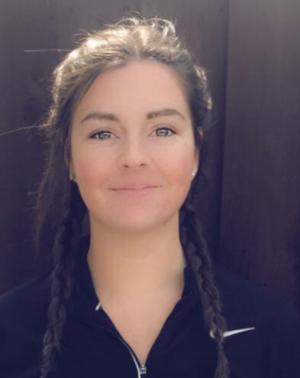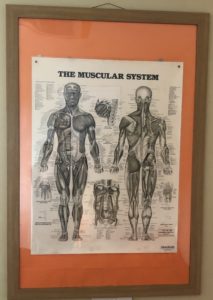Sports Massage for muscle tightness

Do your muscles feel tight?
Many of us would have searched for a Sports Massage Therapist or indeed any massage therapist to relieve our muscle tightness. In this article our Sports Massage Therapist in Truro, Cornwall explores what tight muscles or muscle tightness is.
What does tight muscles actually mean?
Muscle tightness is actually known as an unpleasant sensation (Krause et al., 2019). The reason why we may experience the unpleasant sensation of stiffness or tightness is often associated with either prolonged postures, muscle weakness and general health associated to stress, diet, sleep and emotional state (Antle et al., 2018; Baker et al., 2018 and Glaros et al., 2016). In some cases, pain or unpleasant sensations can occur from perception of threat, and perception does not always match reality. This means that pain or unpleasant sensations can occur even when no muscle damage has occurred, to protect our body.
For example, working at a desk on your laptop for a long period of time or cycling long distances is likely to lead to lack of blood flow to the muscles and nerves within the affected areas (Antle et al., 2018). This is why our brain send a signal to the affected area to change position or to move again, allowing the blood flow to flow correctly.
Muscles can also be overloaded due to weakness occurrence of the affected area. Even though muscles may ‘feel’ tight, it is important to remember that our muscles are not always necessarily strong. This links to pain or unpleasant sensations occurring from the perception of threat, which does not always match reality. Again, this is associable with our body protecting itself, causing muscle tension. General health, such as stress, diet, sleep and emotional state can also play a significant role in the sensation of tightness. In these instances our muscles naturally contract, causing muscle tension.

Types of tightness
- Poor range of motion from prolonged postures or positions (muscle naturally shortening).
- The range of movement is fine, but a movement to the end range feels uncomfortable or takes additional effort.
- Muscle weakness
- There may be no problem with movement, although the area never feels relaxed.
- The area basically feels relaxed but has some unclear sense of discomfort. A feeling that is unpleasant but too mild to be called pain.
Why do our muscles feel tight?
Some people may wonder why our muscles ‘feel’ tight, yet our muscles are physically loose. This links extremely well to the types of tightness explained in this blog associated with the muscle fibres in our body.
People can experience a poor range of motion from prolonged positions working at home from a desk, especially during these unprecedented time. Where people working from home are not moving around as much as they would, compared to their workplace.
This causes the muscles (such as the hamstrings) to naturally shorten and get used to this reduced range of motion as it becomes the ‘norm’. Sometimes our range of motion is satisfactory, but the movement to the end range is uncomfortable or takes additional effort. This is associated with the unpleasant sensation which prevents the muscles being stretched more so, as the human body is very clever at protecting itself.
The feeling of muscle tightness is also associated with muscle weakness, meaning that there is a reduction in the force which the muscle can apply. Many factors can influence this such as, lack of use, which again, links extremely well to the poor range of motion from prolonged positions.
Stress and muscle tightness
Stress is a very common factor which is associated to the feeling of muscle tightness. For example, stress causes our muscles to naturally tense and contract, however, after massage therapy, the muscles often completely relax. This happens because we are relaxed after a relaxation massage.
Especially during these unpresented times with such uncertainty, this has been a common occurrence at Keheren Therapy, particularly since re-opening from the pandemic. However, it has been great to see clients relaxed through massage therapy and come out of the clinic feeling refreshed.
With all these types of muscle tightness explained in greater detail, it shows that pain or an unpleasant sensation can exist when no damage has occurred to the muscles (Świeboda et al., 2013). Pain can occur from perception of threat, and perception does not always match reality, such as stress (Świeboda et al., 2013). So, the non-appearance of sufficient rest or blood flow is a threat, which could cause metabolic stress and activate chemical nociceptors (sensation of pain).
How to help relieve the feeling of muscle tightness
Massage therapy:
Massage therapy can be useful to help relax the muscles and increase blood flow to muscles and nerves within the affected areas. There are various types of massage therapy, including sports, relaxation and pregnancy massage.
Sports massage is commonly sought after to relieve muscle tightness. In our 14th year of providing massage treatments in Truro, Cornwall we have found there is no ‘One size fits all” in Massage.
Stretching:
Stretching can have a short-term analgesic and relaxing effect. For example, proprioceptive neuromuscular facilitation (PNF) is a neuromuscular relaxation technique. This is an advanced form of passive stretching. It involves stretching by relaxing the body, applying a mid-comfort felt stretch, while a partner, accessory, or support strengthens the stretch by applying external pressure to the limb for a set time.
Resistance training:
It has a link with the increase in blood flow. Strengthening exercises, such as eccentric training can have effective long-term effects. This will help the muscles to adapt and lengthen over time, increasing flexibility. Exercise, such as resistance training can also have a pain-relieving effect, which can reduce the nervous system responsiveness (Susko and Fitzgerald, 2013).
Postural changes:
Postural changes in relation to moving more frequently have shown to have positive effects. For example, staying in the same position for long periods of time can cause a lack of blood flow. Moving more frequently will prevent this from happening.
This article is written by Lauren our Sports Therapist & Sports Massage Therapist in Truro, Cornwall. You can book a treatment with Lauren via our online booking system. Or for more information email lauren@keherentherapy.co.uk

